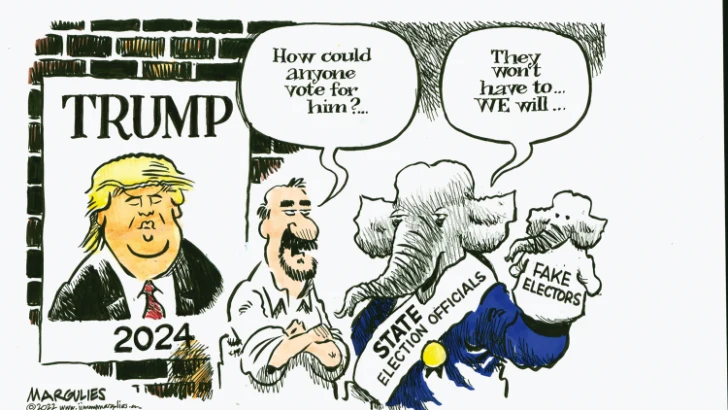“Fake electors” refers to a controversial incident that emerged during the aftermath of the 2020 presidential election, a hotly contested election in which allies of President Donald Trump attempted an elaborate scheme to illegally overturn his election loss to Joe Biden.
How the president is chosen
The President of the United States is chosen not directly by popular vote, but by an Electoral College system.
Each state appoints electors equal to its combined number of Senate and House representatives.
These electors typically meet in their respective states and cast votes that mirror the outcome of the state’s popular vote.
Those electoral votes are then counted and ratified by Congress.
The 2020 election and “Fake Electors”
In the 2020 election, Biden was declared the winner based on a combination of popular votes and electoral votes from individual states.
In some closely contested states, disputes arose regarding vote counts, allegations of fraud, and legal challenges, although numerous recounts and court decisions upheld the original outcomes.
As President Trump and some of his allies continued to challenge the results, a peculiar event occurred.
In several states that Biden won, groups of Republican electors gathered and staged symbolic votes for Trump, even though they were not the officially recognized electors.
These alternative slates of electors were sometimes referred to as “fake electors” or “alternate electors.”
Trump’s “Fake Electors” plot
The strategy behind these “fake elector” meetings seemed to some to be a backup plan.
If ongoing legal challenges had subsequently overturned a state’s results, the Trump team might have hoped to use these alternate electoral votes as legitimate.
It was an attempt to keep Trump’s chances alive even as official avenues were closing.

This tactic was largely unprecedented in modern U.S. elections and raised various legal and constitutional questions.
As the New York Times reported:
It was also one of the most confusing, involving a sprawling cast of pro-Trump lawyers, state Republican officials and White House aides in an effort that began before some states had even finished counting their ballots. It culminated in the campaign to pressure Vice President Mike Pence to use the false slates to subvert congressional certification of the outcome on Jan. 6, 2021 — and in the violent attack on the Capitol that unfolded as he refused to do so.
Historically, there have been instances of disputed slates of electors — most notably in the 1876 election — but the 2020 situation was different in context and execution.
The official stance was clear: only the electors chosen based on the certified results of each state had the legal authority to cast votes.
The fake electors plot met with a mix of confusion, outrage, and concern from various quarters.
Many legal experts and commentators denounced it as a dangerous attempt to undermine the democratic process.
More from the New York Times:
The scheme had a vague historical precedent and was rooted, at least in theory, in a post-Reconstruction Era law designed to address how to handle disputed elections. But it was deemed illegal by Mr. Trump’s own White House Counsel’s Office. Even some of the lawyers who helped come up with the idea referred to it as fake and acknowledged that it was of dubious legality.
Conversely, some of Trump’s supporters viewed it as a valid response to what they perceived — without evidence — as a flawed election.
Despite the symbolic votes of these “fake electors,” the U.S. Congress certified the official Electoral College results on January 6, 2021, after a tumultuous day in which a mob stormed the U.S. Capitol.
Biden’s victory was ultimately confirmed and he was inaugurated as the 46th President of the United States on January 20, 2021.
Use of “Fake Electors” in a sentence
- The appearance of “fake electors” in the 2020 Presidential Election created further controversy and confusion, representing an unprecedented effort by some to challenge the certified results in key states.
- Legal scholars and political analysts continue to debate the implications of the “fake electors” incident, questioning its impact on democratic norms and the potential need for electoral reform to prevent similar occurrences in the future.
- Critics argue that the use of “fake electors” during the 2020 election cycle undermined public trust in the electoral process, while proponents view it as a symbolic protest against what they perceive as an unfair election.